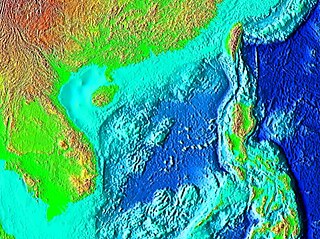This page is based on this
Wikipedia article Text is available under the
CC BY-SA 4.0 license; additional terms may apply.
Images, videos and audio are available under their respective licenses.

Sir William Chambers was a Scottish-Swedish architect, based in London. Among his best-known works are Somerset House, London, and the pagoda at Kew. Chambers was a founder member of the Royal Academy.
HMS Modeste was a 64-gun third rate ship of the line of the Royal Navy. She was previously the Modeste, of the French Navy, launched in 1759 and captured later that year.

Carl Gustaf Ekeberg was a Swedish explorer who made several voyages to the East Indies and China as a sea captain. He brought back reports of the tea tree and wrote a number of books, among which were:
HMS Kent was a 64-gun third rate ship of the line of the Royal Navy. She was ordered from Deptford Dockyard on 10 May 1743 to be built to the 1741 proposals of the 1719 Establishment, and was launched on 10 May 1746. Her first commander was Thomas Fox, who had previously commanded HMS Newcastle.
HMS Tiger or Tygre was a 60-gun fourth rate ship of the line of the Royal Navy, built at Rotherhithe to the draught specified by the 1745 Establishment and launched on 23 November 1747.
Britannia may refer to a number of ships:

Hindostan was an East Indiaman of the East India Company. She was a large vessel of 1,463 tons (bm), launched in 1796 to replace a previous Hindostan that the Royal Navy had bought and turned into a Fourth Rate ship of the line. Her owner was Robert Williams, M.P., who had been the owner of the previous Hindostan.
Royal Admiral was an East Indiaman, launched in 1777 on the River Thames. She made eight trips for the East India Company (EIC) before she was sold. She then continued to trade. She made two trips carrying convicts from England to Australia, one as an East Indiaman in 1791, and a second in 1800. On this second voyage as a convict transport she was present at a notable naval action.
At least seven ships with the name Kent served the Honourable East India Company as an East Indiaman between 1680 and 1825:
At least six ships with the name Queen served the Honourable East India Company between 1701 and 1839. Most were East Indiamen:
Royal Charlotte was launched in 1789 as an East Indiaman for the British East India Company (EIC). She made two trips to China for the EIC and on the second of these, after the outbreak of war with France in 1793, assisted at the British capture of Pondicherry. Then, the Admiralty, desirous of quickly building up the Royal Navy, purchased a number of commercial vessels, including nine East Indiamen, to meet the need for small two-decker fourth rates to serve as convoy escorts. The Admiralty purchased Royal Charlotte in 1795 and renamed her HMS Malabar. She made a trip to the West Indies where she was the lead ship of a small squadron that captured some Dutch colonies. She foundered in 1796 while escorting a convoy in the North Atlantic.
William Moffat was an English banker, merchant and politician.
Royal Captain was a three-decked East Indiaman, launched in 1760, that made four voyages for the British East India Company between 1761 and 1771. She was sold 1771 for breaking up.
Scarborough was an East Indiaman launched in December 1740 that performed four trips to India and China for the British East India Company (EIC). She is most famous for giving her name to Scarborough Shoal, which she discovered by grounding there on 12 September 1748. She was sold for breaking up in 1753.
Lapwing was a packet ship that made two round-trips to India for the British East India Company (EAC). Currently, both her origin and her fate are obscure.
Britannia was launched by the Bombay Dockyard in 1772, and was rebuilt in 1778. The British East India Company (EIC) apparently acquired her in 1775. Between 1779 she made eleven complete voyages as an East Indiaman for the EIC. She also participated in three naval campaigns, during the first of which she was deployed as a cruiser off Sumatra. There she engaged and captured a French ship. In the other two served as a transport. She set out for her twelfth EIC voyage but was lost in 1805 during the third naval campaign.
Bombay Castle was launched in 1792 as an East Indiaman. She made six voyages for the British East India Company (EIC) before she was sold in 1807 for breaking up. In addition to carrying cargo for the EIC, she transported troops in one campaign, participated in a naval action in which she helped capture a French frigate, and played a leading role in an encounter between the French Navy and a fleet of East Indiamen in which the East Indiamen succeeded in bluffing the French to withdraw.
Dorsetshire was launched in 1800 as an East Indiaman. She made nine voyages for the British East India Company (EIC). In each of her first, second, and third voyages she was involved in a notable action. The remainder of her voyages appear to have proceeded without incident. She ceased sailing for the EIC in 1823 and was broken up c.1827.
Four vessels named True Briton have sailed as East Indiamen for the British East India Company (EIC):



